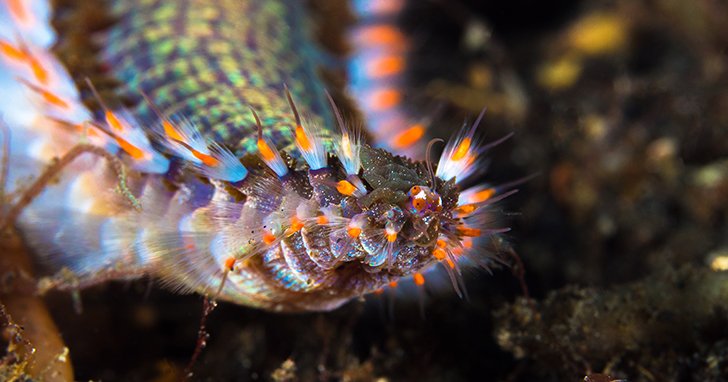
Think of your aquarium as a balanced ecosystem. Just like a garden requires certain pests to keep the soil rich, your aquarium needs specific critters. However, as with most things in life, a little too much of a good thing can lead to problems. Bristle worms are common in many marine tanks, but their presence raises concerns. Are they good for your setup or do they pose a risk? Let’s break it down.
What Are Bristle Worms?
Bristle worms belong to the polychaete family. They’re often found on live rock and in sandy substrates in marine environments. These worms come in various sizes, ranging from just a few centimeters to over a meter long! They have a segmented body and, as the name suggests, carry bristles or setae that can sting if touched.
You might think they’re just ugly little things, but here’s the thing: bristle worms play an essential role in your aquarium. They’re scavengers, helping to clean up leftover food and other organic materials. Without them, you could face issues with water quality, as uneaten food can create ammonia spikes.
But what happens when their population grows too large? You might start to wonder if they’re becoming more of a nuisance than a help.
Are Bristle Worms Harmful to Live Rock?
Live rock is not just a pretty decoration in your aquarium; it’s a vital part of the ecosystem. It provides habitat for beneficial bacteria, which help break down waste and maintain water quality. So, where do bristle worms fit into this picture?
Generally speaking, bristle worms do not harm live rock. In fact, they may even enhance it. These worms help with aeration and the breakdown of organic material, promoting a thriving environment for beneficial bacteria. However, if their numbers surge, you may notice that they start to consume the beneficial organisms that live within the rock, such as tiny snails and smaller corals.
So, if you find these worms in your setup, don’t panic just yet. Monitor their population and keep an eye on water quality. If the tank is thriving, a few bristle worms are likely doing their job quite well.
Can Bristle Worms Damage Corals?
Now let’s get to the real concern: corals. Corals are the stars of your aquarium and need special care. So, can bristle worms hurt them? Here’s where it can get a bit tricky.
Bristle worms aren’t predators in the traditional sense. They won’t swim up to a coral and take a bite out of it. However, they can sometimes cause harm indirectly. If you have a lot of bristle worms in your aquarium, they may outcompete corals for resources or disturb them while scavenging for food.
If you’re noticing that your corals aren’t looking their best, check for other issues first, like water quality or lighting. But if you have a significant bristle worm population, they could be adding to the problem.
Signs of Overpopulation
It’s important to keep an eye on the number of bristle worms in your tank. If they begin to overpopulate, signs will start to appear. Here are a few things to watch for:
- Visible Worms: If you see lots of these worms during the day, it might be time to check the balance in your tank.
- Coral Health: If your corals start to look unhealthy or are receding, bristle worms could be an issue.
- Water Quality: Test your water regularly. An imbalance might indicate that bristle worms are outcompeting other organisms.
Proper tank maintenance is crucial. If you see too many bristle worms wandering around, consider managing their population or adjusting the feeding routine.
Managing Bristle Worm Populations
If you discover that bristle worms are becoming a problem, don’t worry. There are several ways to manage their presence:
1. Adjust Feeding Habits
Overfeeding your fish can lead to a rapid increase in bristle worms. Make sure you’re not giving your fish more food than they can eat in a few minutes. Cut back the feeding schedule a bit, and you might notice a decrease in worm numbers.
2. Limit Organic Waste
Regularly clean your tank to reduce organic waste. This includes changing filters, vacuuming the substrate, and cleaning decorations. Less waste means fewer worms to feed on it.
3. Manual Removal
If you’re really set on reducing their numbers, manually removing them can be an option. Get a pair of tweezers and gently pull them out. Just be cautious not to break them, as they can sting when handled.
Alternatives to Bristle Worms
If you’re feeling uneasy about having bristle worms in your tank, you might be wondering if there are alternatives. While bristle worms do contribute positively in moderation, there are other scavengers you can consider:
- Sea Cucumbers: These creatures are excellent at cleaning substrate and don’t have the bristle issue.
- Snails: Various types, including turbo snails and nassarius snails, help keep algae and detritus levels low.
- Hermit Crabs: They’re fun to watch and also help clean up the tank without posing risks to corals.
Choosing the right team of scavengers can lead to a balanced ecosystem while keeping that burdensome bristle worm population in check.
Final Thoughts
So, can bristle worms damage live rock or corals? The answer is a bit nuanced. In moderation, bristle worms can be beneficial to your aquarium. However, if they overpopulate, they can cause issues for both live rock and corals. Regular monitoring and appropriate tank management can help keep your ecosystem balanced.
Remember, every creature in your aquarium plays a role. By understanding that role, you can create a thriving environment for your fish, corals, and yes, even bristle worms. So, keep an eye on those little guys—they may just be your tank’s most misunderstood helpers!
